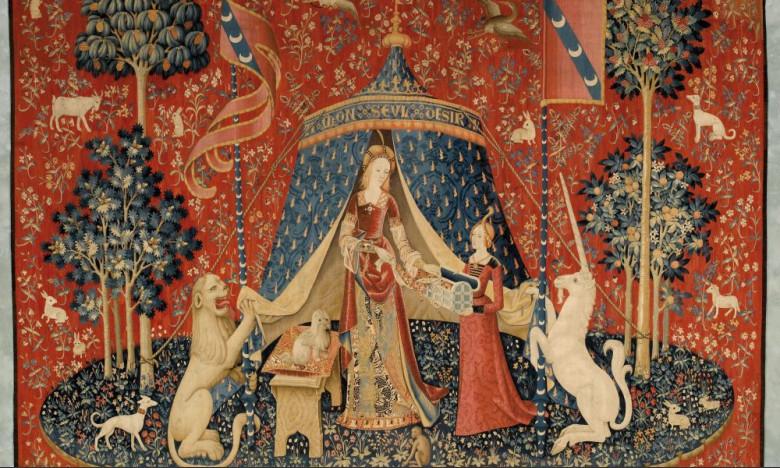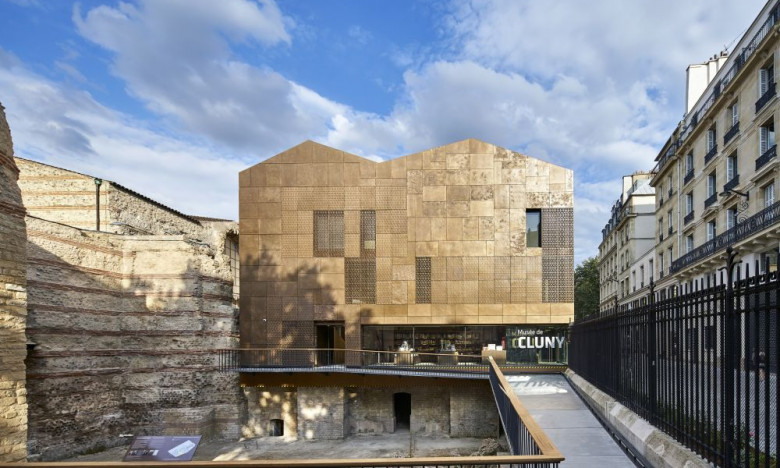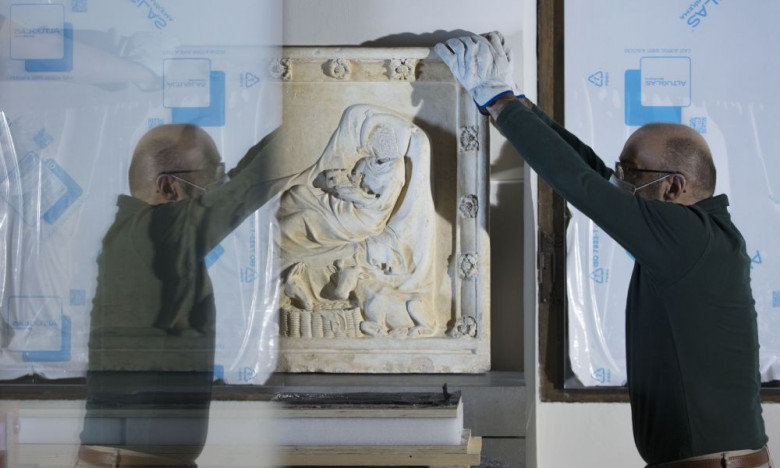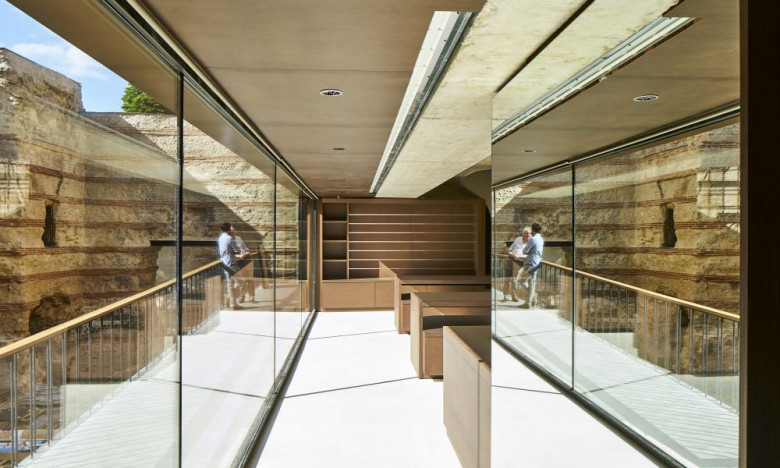A NEW GENERATION OF MEDIEVAL ART
REOPENING OF THE CLUNY MUSEUM ON THURSDAY, MAY 12, 2022
On Thursday, May 12, 2022, the doors of the Musée de Cluny - Musée national du Moyen Âge will reopen near the Boulevard Saint-Michel in Paris, after 20 months of restoration and modernization. It is the only national museum in France dedicated to the Middle Ages and is renowned for preserving one of the most world-famous medieval works, The Lady of the Unicorn. The restoration and upgrade undertaken by the French Ministry of Culture included improved accessibility, a redesign of the tour route and new museography and museology, to better grasp the artistic expression and way of life during the Middle Ages.
Located in the heart of the Latin Quarter at 28 rue Du Sommerard, the museum transports visitors back in time, from the 1st to the 21st centuries. The setting is unique, anchored around the 15th century mansion of the of the abbots of Cluny which leans against Gallo-Roman baths and is now organized around a contemporary extension, a building inaugurated in 2018 and designed by the architect Bernard Desmoulin.
The prestigious collection (24,000 works) illustrates the extraordinary diversity of medieval artistic creations. The new museology follows a chronological thread to showcase and emphasize the evolution of forms, moments of change, innovations and aesthetic differences from northern to southern Europe.
"The reopening of the Musée de Cluny comes after a long process of work undertaken since 2011, the goal of which is making the site physically and intellectually accessible. Thanks to these works, and to the new presentation of the works, the Musée national du Moyen, it is easier to understand g the Middle Ages the Middle Ages, a period spanning more than a thousand years.” Explained Séverine Lepape, Director of the Musée de Cluny.
A 13 million euros effort was necessary to complete the museum's biggest transformation since its creation in 1843 and is now called the New Generation of the National Museum of the Middle Ages:
- The partial restoration of the buildings, notably the Roman baths and the Gothic chapel.
- The construction of a new reception area to give the museum a higher profile.
- The creation of new public spaces: a more spacious ticket office, a reorganized bookstore, checkrooms, spaces for educational activities and for welcoming groups, and a "Café des Amis."
- The accessibility of all the spaces for people with reduced mobility.
- A complete overhaul of the tour route: a new museology entrusted to the Gardère studio spread over 21 rooms, serves as a showcase for a renewed selection of 1600 works, major pieces of a collection representing the richness and diversity of the Middle Ages.
- The new cultural offer with sensitive mediation and a program that which gives pride of place to contemporary artistic expression
A museum of art and history
24000 works and more than 1000 years of artistic expression.
Created in 1843, the Musée de Cluny is the result of the assemblage of several collections. In 1833, Alexandre du Sommerard, an art lover, installed his collection in the Parisian mansion of the abbots of Cluny in Paris. Upon his death in 1842, the works he had collected were purchased by the by the French Government. At the same time, the city of Paris ceded to the State the ancient baths and the (sculptures and fragments) that they house.
Initially conceived as a museum of "national antiquities", the Musée de Cluny gradually specializes in the Middle Ages: 5000 works of the XVIth century are taken from its from its collection to create the National Renaissance Museum in Écouen in 1977.
In 1992, the Musée de Cluny was officially named the Musée National du Moyen Âge. Its collections now include 24,000 works, including the ensembles that have made its reputation, notably the six tapestries of The Lady of the Unicorn. Its collections are continuously enriched by acquisitions, donations and legacies and bear witness to the diversity of artistic expression in the medieval period.
Chronology of the remake
- 2011: Launch of the project by the Ministry of Culture
- 2013: Beginning of the modernization project with the redevelopment of the room of the Lady of the Unicorn under the direction of the chief architect of historical monuments (ACMH) Paul Barnoud
- December 2013: Launch of the architectural competition for the creation of a new reception
- July 2014: Appointment of the architect Bernard Desmoulin
- 2015 - 2017: Restoration of the ancient vestiges and the chapel of the abbots' hotel of Cluny under the direction of the ACMH Paul Barnoud
- May 2016: Architectural competition for the redesign of the tour routes
- September 2016: Designation of the Desmoulin-studio Gardère group for the redesign of the tour route
- July 14, 2018: Inauguration of the new reception area, designed by Bernard Desmoulin
- September 29, 2020: Closing of the museum for the completion of the modernization project
- May 12, 2022: Reopening to the public
Press Contacts:
Clarys Lutaud-Nony | Laurent Jourdren |Frédéric Pillier
Pierre Laporte Communication Agency
cluny@pierre-laporte.com
T. +33 (0) 1 45 23 14 14
P. +33 (0) 6 77 86 26 88
Mathilde Fouillet
Deputy Head of Communication and partnerships
mathilde.fouillet@culture.gouv.fr
T. +33 (0) 1 53 73 79 04





